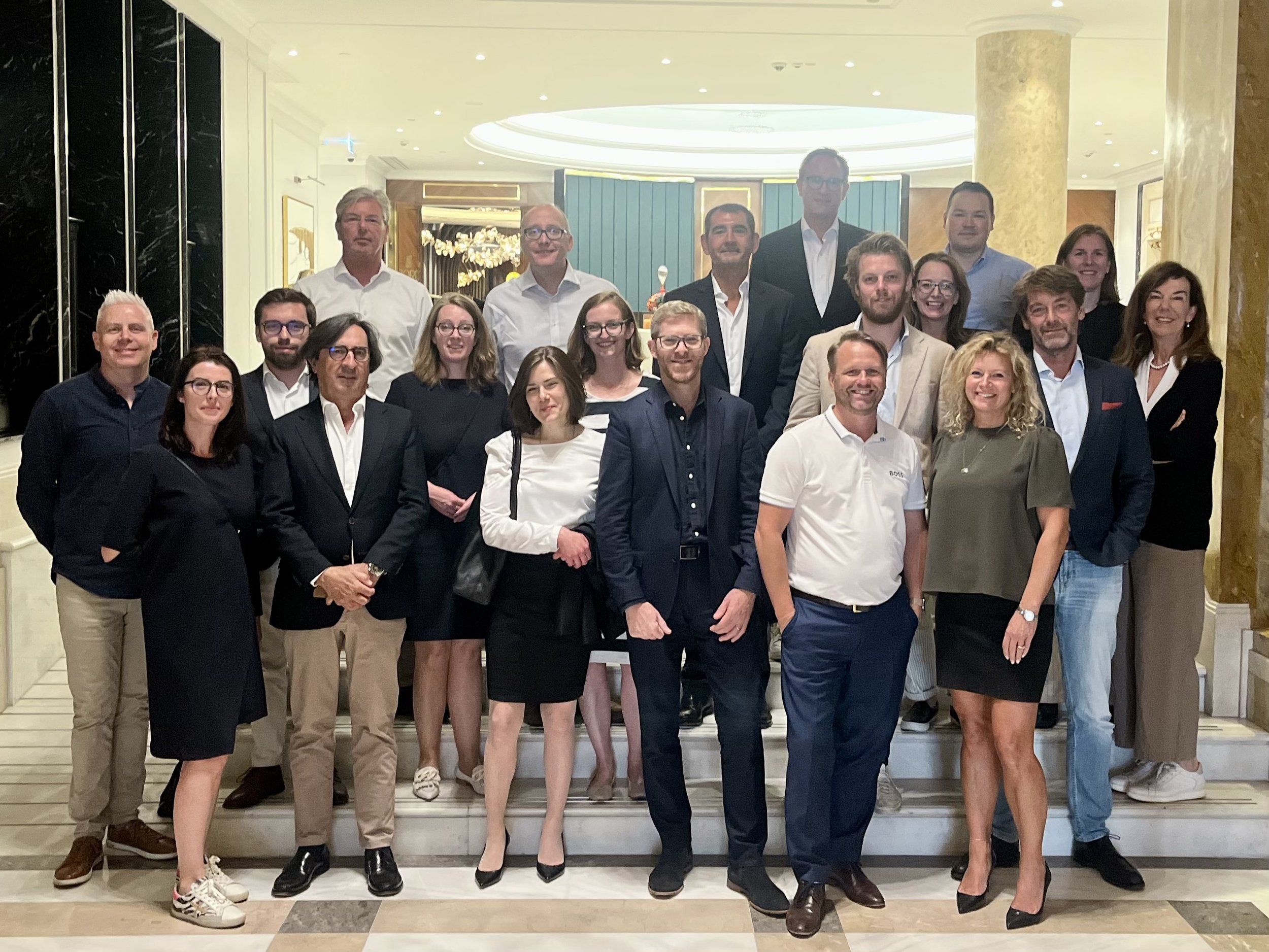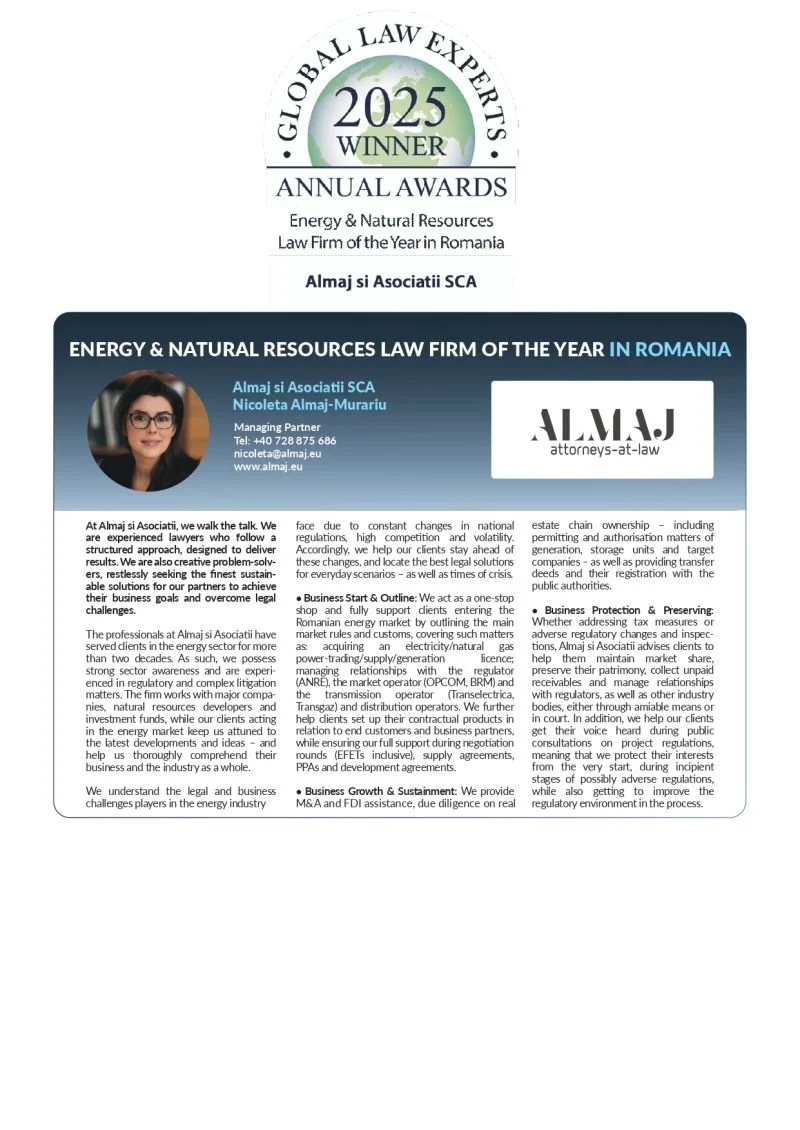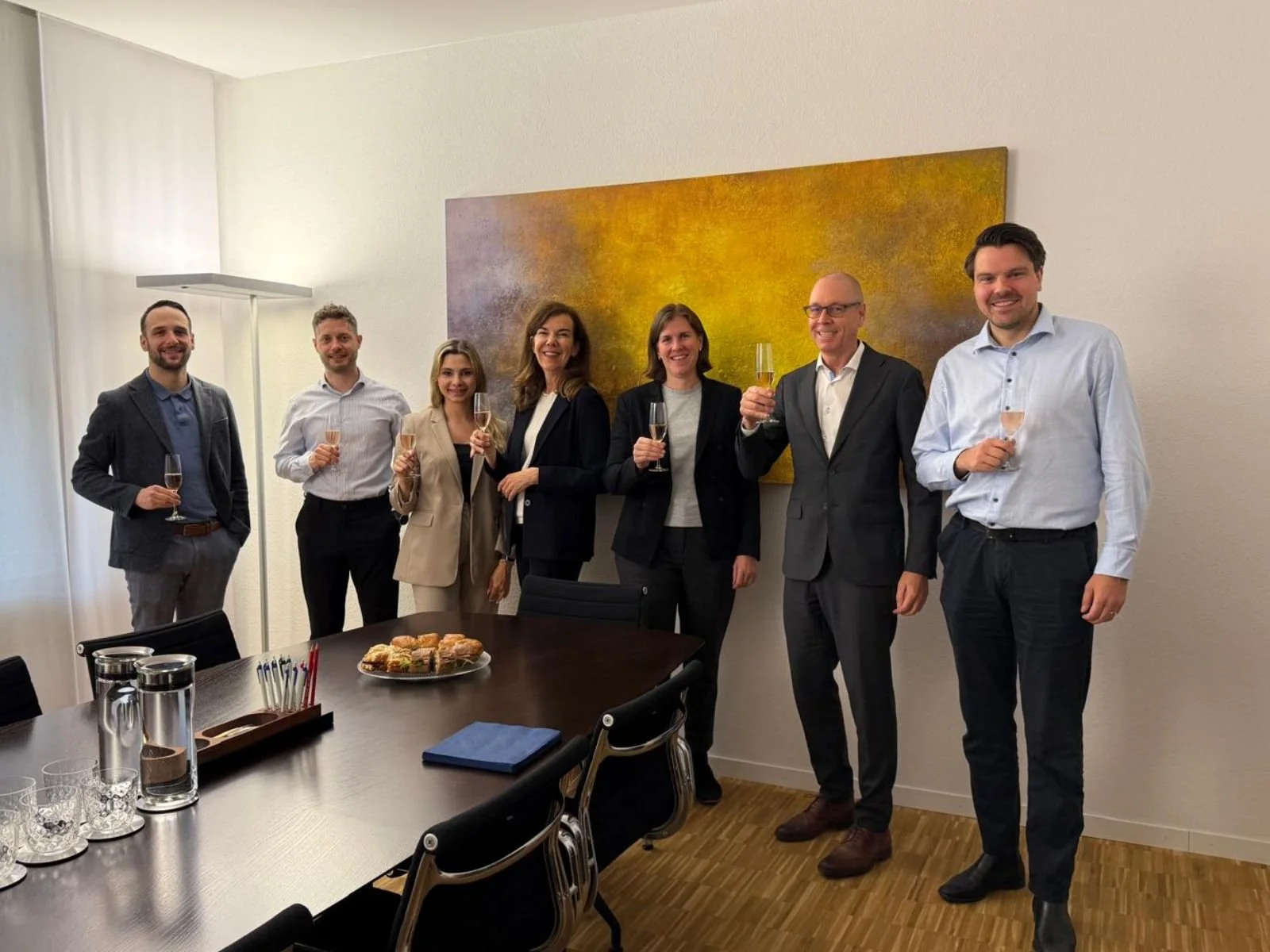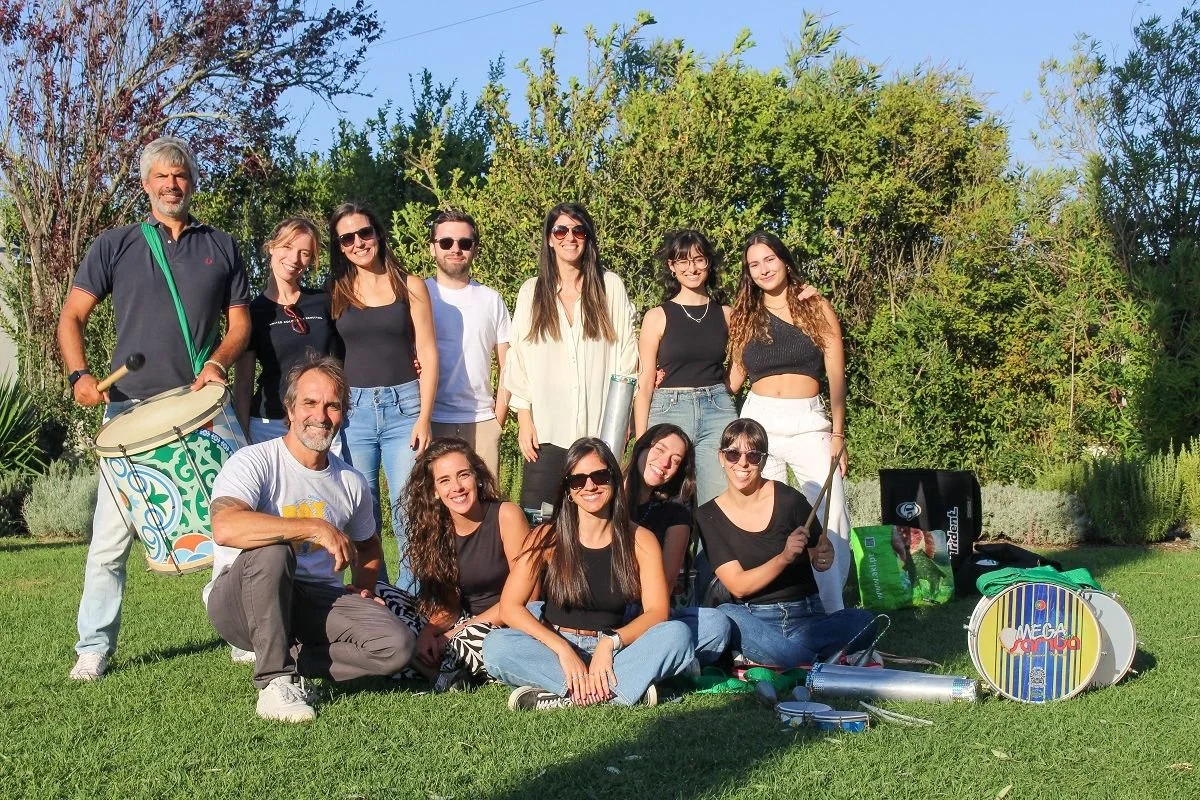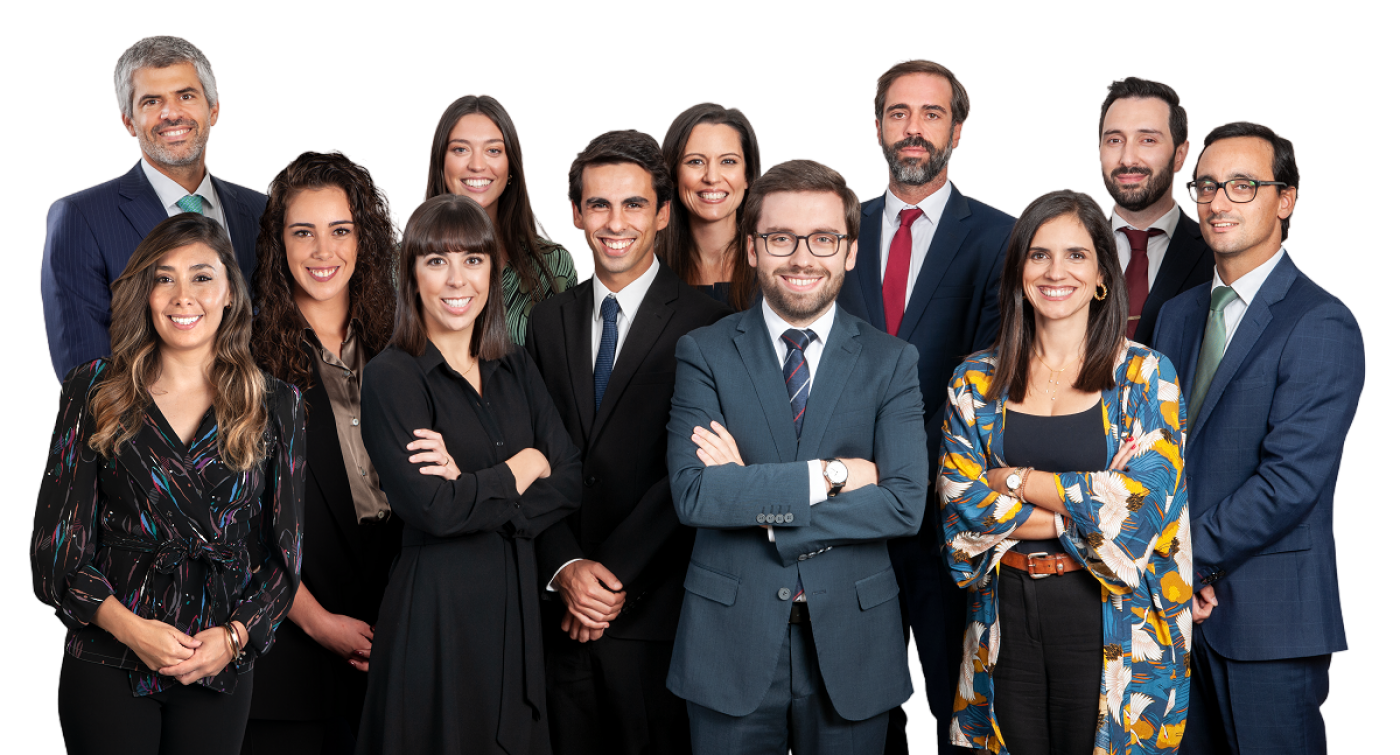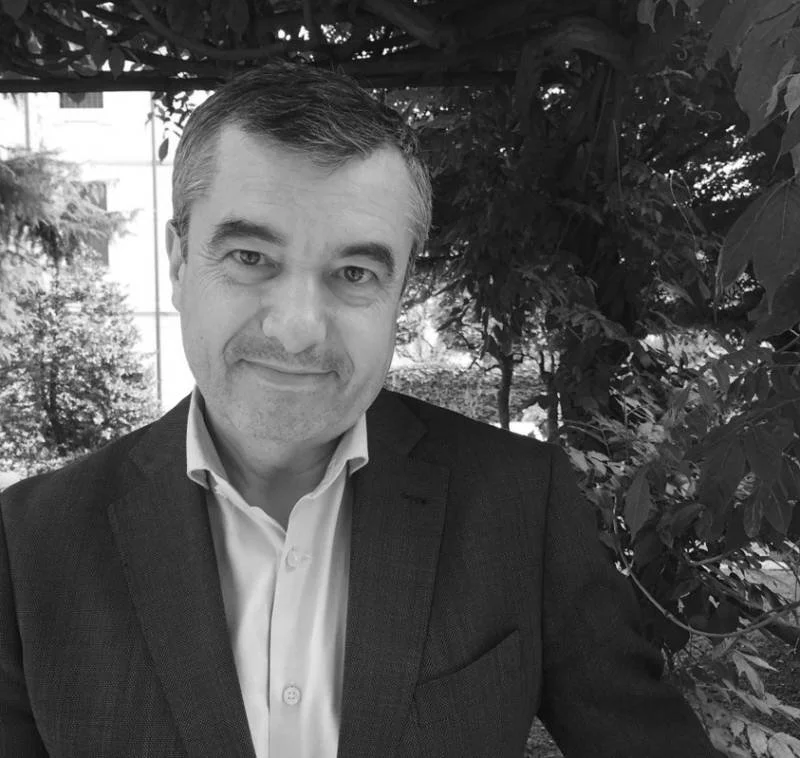LC Latest
-
![]()
LC Annual Meeting 2025: A Resounding Success in Bucharest
Bucharest, Romania – LC members gathered in Bucharest last week for the LC annual meeting 2025, a highly productive and enjoyable event hosted by Nicoleta Almaj and the team at Almaj Attorneys at Law. The meeting provided a vital platform for members to engage in discussions on a range of crucial topics shaping the future of the legal profession.
Key Discussion Points
Throughout the sessions, members focused on key issues, including co-working, knowledge-sharing, and leveraging European expertise to better serve their clients. The group also had a forward-looking discussion on the growing impact of artificial intelligence (AI) on legal practice. Other topics addressed included membership growth, enhancing internal and external communication, effective use of social media, and strategies for attracting new business.
Networking and Social Events
In addition to the official agenda, the meeting fostered the strong bonds that define LC. Attendees enjoyed several evenings of dining and catching up, with the usual friendly, fun and warm atmosphere. The group also took time for sightseeing and a shared lunch, experiencing the vibrant culture of Bucharest.
Looking Ahead to 2026
LC is already looking forward to its next annual meeting. Marcel van Delft and AssumDelft have generously offered to host the 2026 meeting in the Netherlands.
LC extends its sincere gratitude to Nicoleta Almaj and the entire team at Almaj Attorneys at Law for their warm hospitality.
-
![]()
Happy 30th Anniversary, Böhret Sehmsdorf!
LC member Böhret Sehmsdorf, Germany recently celebrated its 30th Anniversary with a two-day trip to Prague.
The team of almost 50 people enjoyed a guided city tour, a boat trip on the Moldau, a rooftop party in the centre of Prague, and wine tasting in the nearby village of Mělník.
Three decades of development, challenges and joint successes – that had to be celebrated!
So congratulations to Böhret Sehmsdorf from all at LC, and here's to many more years of happiness, challenges and success! -
![]()
LC welcomes MHC!
We are delighted to formally welcome Mason Hayes & Curran and Catherine O'Flynn as our newest members of LC.
MHC is an Irish business law firm with 124 partners, total staff in excess of 600, and offices in London, New York and San Francisco.
Catherine is a partner in the Employment Law & Benefits Team with over 20 years’ experience practising exclusively in the area of employment law. She has been involved in many leading employment cases.
Catherine is the former Chair of the Law Society of Ireland Employment and Equality Law Committee and in that role made various submissions to the Irish Government on matters of Irish employment law.
We look forward to seeing Catherine at the LC annual meeting in Bucharest Sept 18-20 where members will once more have the pleasure of all meeting in person! -
![]()
Proposed Changes to Migration Policy, Portugal
On June 23 2025, the Council of Ministers, Portugal approved three proposals for laws that would make significant changes to the current migration policy.
Read more about the proposals here, from LC member Caldeira Pires.
-
![]()
LC Annual Meeting Bucharest Sept 18-20
LC is looking forward to welcoming members, guests and friends to Bucharest, Romania Sept 18-20 for the LC Annual Meeting.
Registration forms have been sent out to members, anyone wishing to attend can also contact a.aldridge@boehret-sehmsdorf.de
Many thanks to Nicoleta Almaj and all at Almaj Attorneys At Law for helping with organising the event.See you in Bucharest!
-
![]()
Almaj Attorneys At Law - Law Firm of the Year
Huge congratulations to Nicoleta Almaj and all at Almaj Attorneys At Law, Romania for winning the Energy and Natural Resources Law Firm of the Year award.
Almaj Attorneys At Law received the award from the Global Law Experts association.
Nicoleta Almaj said: “Good things happen to those who persist, and sometimes our persistence is also powered by constant recognition.”
Once more, congratulations Almaj Attorneys At Law!
-
![]()
Lutz Partner Number 1
LC member Lutz Partner Rechtsanwälte is once again one of the leading law firms in Switzerland.
For the eighth time in a row, Lutz Partner has been awarded the title of TOP LAW FIRM by the BILANZ Wirtschaftsmagazin - with the highest rating of 5 stars, both in the field of tenancy law and in the field of compliance.
Particularly pleasing: As in the previous year, Lutz Partner occupies the top position as No. 1 in tenancy law and compliance.
This award is based on 28,000 relevant recommendations from the legal profession, in-house counsel and clients. The survey was carried out via the Schweizerischer Anwaltsverband (SAV), company websites, publications and research in job networks such as XING and LinkedIn, among other things.
Lutz Partner Partner Peter Lutz said: “We would like to thank our clients and partners for their trust and look forward to continuing to be there for you in the future with the highest level of professional competence and commitment.” -
![]()
Glimstedt Lithuania teams up with National Opera and Ballet Theatre
Glimstedt Lithuania is teaming up with Lithuanian National Opera and Ballet Theatre!
The partnership reflects the values of Glimstedt and symbolises a connection between tradition and modernity, an essential feature of both law and theatre.
Glimstedt Lithuania managing partner Dr. Laura Augytė-Kamarauskienė said: "Art has the power to unite people, inspire and stimulate debate. Law, like art, requires precision, interpretation and creative thinking - it is the combination of these qualities that allows you to achieve the highest results. In both areas, a sense of harmony, an understanding of the nuances and the ability to improvise are essential elements of success.”
Deputy Director General of the Lithuanian National Opera and Ballet Theatre for Arts and Marketing Audrius Kundrotas said: “Law and art are universal languages that combine professionalism with creativity!”
We certainly think it’s a partnership worth celebrating!
-
![]()
Glimstedt Estonia welcomed as Silver Member of French-Estonian Chamber of Commerce
LC is thtrilled to announce that Glimstedt Estonia has been welcomed as a Silver Member of the French-Estonian Chamber of Commerce (CCIFE)!
Known for their comprehensive legal expertise, Glimstedt Estonia specializes in:
- Mergers & Acquisitions (M&A)
- Real Estate Law
- Corporate Law
- Business Immigration
Their approach combines innovation with client-centric solutions, making them a trusted partner for businesses navigating complex legal landscapes.
A Strategic Partnership:
Glimstedt Estonia’s membership strengthens the CCIFE’s network of professional excellence, fostering collaboration and providing invaluable resources.
-
![]()
How and Why to Set Up a Company in the UAE
Over the last years, the United Arab Emirates have grown to a leading place for business, cross border as well as local investments and international economic relations.
LC member Harald Czermak from WKK Law discusses the Hows and Whys of Setting Up a Company in the UAE.
-
![]()
10 year celebrations at Caldeira Pires
LC member Caldeira Pires, Portugal, is celebrating a very special anniversary - 10 years as a successful law firm.
As part of the celebrations the team enjoyed a two-day retreat together, taking part in a range of fun cultural activities in the beautiful Portuguese countryside.
So what does it take to be successful for 10 years? The team set out a few of their top tips:
• Trust and support of customers and partners
• A dedicated and experienced team with a high capacity for work
• A team that works and has fun together, seeking to do its best for customers every day
• Oh and of course, two wonderful office dogs - Baloo and Caju!
Congratulations Caldeira Pires, and much continued success!
-
![]()
Three Awards In One Year for Böhret Sehmsdorf
LC member Böhret Sehmsdorf is celebrating winning three awards in one year!
The three outstanding seals of approval awarded to the German law and tax firm were:
Germany's Best Auditors 2024/2025 – awarded by Manager Magazine
Top Tax Consultancy and Auditing Firm in Germany 2024 – awarded by Statista
Digital Law Firm 2024 – certified by DATEV
The awards confirm Böhret Sehmsdorf's expertise in law, auditing and tax consulting as well as their innovative pursuit of digital solutions for their clients.
Congrats to all at BS and much continued success for the future!
-
![]()
Thanks To Our Members!
LC would like to give a special thanks to all our wonderful members for making the annual meeting 2024 in Zurich such a special and memorable occasion.
Huge thanks go to Lutz Partner Rechtsanwälte for hosting and organising the event. There was much discussed with a special focus on artifical intelligence, legal tech and legal prompting, as used for contract review and drafting. Thanks to Legartis for a thought-provoking and challenging workshop.
With a fresh LC rebrand announcement and new members welcomed from the Baltics, there was much to celebrate.
Thanks also to Almaj Iordache for inviting us all to do it again in Bucharest, Romania in 2025.
We will see you there!
-
![]()
LC member LHP best Criminal Tax Law Firm 2024
LC member Luxem Heuel Prowatke has been named Germany's best criminal tax law firm 2024 after picking up a JUVE award.
The award recognises LHP's close personal relationships with national and international clients and colleagues; the progressive and market-leading blockchain technology tax team; and the excellent defence results in highly complex national and international tax conflicts including VAT cases.
Congrats to the whole team, and enjoy the victory!
-
![]()
Lawyers Cooperation welcomes Glimstedt Baltics
LC is delighted to announce the addition of member firm Glimstedt's Baltics offices to its network. Glimstedt Riga, Tallinn and Vilnius have now been added to the team giving LC representation and expert legal support in Latvia, Estonia and Lithuania respectively.
You can find the contact details of the new teams on the LC members page.
Welcome Glimstedt Riga, Glimstedt Tallinn and Glimstedt Vilnius!
…
The Glimstedt Law Firm is among the five largest Law Firms in Sweden.
In addition to the office in Helsingborg, the firm has 17 other offices (of which three are located in the Baltic States – Estonia, Latvia and Lithuania). The firm has more than 260 employees, of which around 200 are lawyers. Glimstedt is a full service business legal law firm with leading experts within a number of practice areas and businesses.
The Glimstedt Law Firm is focused on Swedish and International Business Law. The business clients are mainly “SME”s (small and medium enterprises), but also larger corporations listed on various stock exchange markets as well as banks, trusts, municipality administrations and companies.
In the practice areas of Mergers & Acquisitions, Air- and Transport Law, Energy Law, Insolvency Law, Construction Law, EU and Competition Law, Real Estate Law, Dispute Resolution etc. (see www.glimstedt.se for full list of Competence groups) the Law Firm has organized specific Competence groups.
The Glimstedt Law Firm is represented and recommended under a num¬ber of legal areas in the Legal 500 (EMEA)
The Law Firm also represents and advices a large number of state owned entities, Swedish municipalities, state- or municipality-owned entities and companies as well as other public parties.
-
![]()
Lutz Partner No. 1
LC member Lutz Partner Rechtsanwälte from Switzerland is celebrating the amazing achievement of being awarded a double number 1 as Best Lawyers of 2024.
The law firm took the top spots in the fields of tenancy law and compliance in "THE BEST LAWYERS 2024" by BILANZ and PME.
Peter Lutz said: "For us, this award is a sign of appreciation for our daily work, but also a great motivation to continue to give our full commitment, to stand up for the interests of our clients and to constantly educate ourselves in our areas of expertise, to publish regularly and to give lectures.
Thank you very much – we are very happy!"
-
![]()
New Partners at Caldeira Pires
Lawyers Cooperation would like to offer our congratulations to José Carlos Silva and Nuno Filipe Henriques on their promotion to partners at Caldeira Pires
José Carlos Silva, from the Litigation and Sports practice areas, and Nuno Filipe Henriques, from the Commercial, Corporate and Tax practice areas, join existing partners, Félix Bernardo (managing partner) and Vicente Caldeira Pires (founding partner).
Check out the Caldeira Pires news page for more info.
Big congrats José and Nuno, much deserved!
-
![]()
Lawyer of the Month
Congratulations Massimo!
LC Board Member Massimo Caiazza, Caiazza and Partners, has been named Lawyer of the Month in the Swedish Bar Association magazine Advokaten.
Massimo is an Italian avocato working in Milan and a Swedish advokat. He was the first person to be admitted as a member of the Swedish Bar Association without Swedish citizenship. This month's edition of Advokaten celebrates his achievements as one of the founding members of the International Section of the Swedish Bar Association.
You can find the magazine article here (page 49). Below is a copy of the article translated in English.
Congratulations once more, Massimo.
The Lawyer of the Month
How is it that you are both Italian and Swedish born?
I met my future wife Susanne in Udine in 1980 when I was 19 and she was 18. We were AFS students, she was in Italy on a scholarship to an art college and I had returned to Udine after a year in the USA. At that time I didn't speak a word of Swedish and had not been to Sweden either. We have now been together for 44 years and Sweden has become an important part of my life.
When I was a trainee at the Carler law firm in Stockholm in 1986 as a newly qualified Italian lawyer, I commuted from Eskilstuna and spent four hours a day on the train. Then I decided to use the time and started reading legal books in Swedish. That's how I got my education in Swedish law. The lawyer Barbara Segesvary was my mentor and I learnt the profession from her. Before that, I was a trainee in Udine with one of the few female lawyers in Italy in the 1980s, so I can say that my professional background comes from women.
Susanne and I got married in Eskilstuna in 1988, and since then we have been living in Milan, where I opened my law firm and passed the Italian bar exam. I continued to have daily contacts with Swedish clients and colleagues. When Sweden joined the EU in 1995, I was the first foreign lawyer to apply to become a Swedish lawyer. It took a year for the Swedish Bar Association to respond, they came back with a demand for three knowledge tests on Swedish law that I did at Stockholm University. After a further aptitude test, I was admitted in 1996 as the first member of the Swedish Bar Association without Swedish citizenship, with the full title of Advokat. I continued my practice in Milan.How do Swedish and Italian legal cultures differ?
There are differences in the interpretation and application of laws: consistent and predictable for Swedish lawyers, while Italian lawyers are more used to a flexible interpretation of rules depending on the specific case. This may lead to different expectations on how a legal situation should be handled. I must add that legal certainty in Italy does not have the same priority as in Sweden, and this is reflected in millions of ongoing civil cases, over 30,000 decisions per year from the Italian Supreme Court and over 240,000 Italian lawyers. However, there are not only disadvantages to such a situation: access to justice is very easy in Italy, an army of lawyers maintains the rule of law in society, and many laws that do not come on time are created by judgements driven by lawyers.You were one of the founders of the International Section of the Swedish Bar Association. What does the section mean for those working outside Sweden?
Swedish companies and institutions should know that there are almost 100 Swedish lawyers working outside Sweden in many different countries. It should be natural for them to look for us in the first instance when they have a case abroad. I am amazed that new clients, after more than 30 years, are still surprised to discover that there is a Swedish lawyer in Italy with a foreign surname who ... also speaks Swedish.
It is important and safe to hire a Swedish lawyer who is bound by Swedish ethical rules even when doing business abroad. We are a unique network that ensures knowledge, quality and correct working methods in accordance with Swedish standards, and let me say that no one other than a Swedish lawyer operating in another country has as good knowledge of both systems. -
![]()
AI Q&A
LC member Glimstedt answers some of the most talked about questions regarding artificial intelligence and the law. You can read much more on the Glimstedt website.
1. Can artificial intelligence be named an inventor in a patent application filed in your jurisdiction?
No. Since AI is not considered as a legal entity in Sweden, AI cannot be named as an inventor in a patent application.
2. Do images generated by and/or with artificial intelligence benefit from copyright protection in your jurisdiction? If so, who is the authorship attributed to?
If an image has been generated completely by AI no one benefits from copyright protection according to the Swedish Intellectual Property Office. The right to use images generated by AI may however be regulated in the AI system’s terms of use.
The fundamental principle of copyright in Sweden is that it can only be attributed to a human being. Copyright is based on the premise that the creator has contributed to the work through free and creative choices. Even though AI-generated images are produced based on human instructions, the outcome is unpredictable. Under current legislation, AI-generated images would in most cases not be eligible for copyright protection. For AI-generated material to be protected, the human creator must use the generative AI system as a tool or aid as part of a larger creative process. If it is possible to process AI-generated material to create a predictable result based on free and creative choices by the creator such material may be protected by copyright.
3. What are the main issues to consider when using artificial intelligence systems in the workplace?
Key issues may differ from business to business. However, issues which generally should be considered are ensuring compliance with GDPR, such as ensuring that the processing of personal data is done on a legal basis, and ensuring the protection of confidential information in general. Additionally, AI systems may raise ethical issues regarding fairness and bias. Algorithms may inadvertently discriminate against certain groups if not properly designed or trained, which has been proven in for example the AI released by Microsoft Corporation as a Twitter bot in 2016. Ensuring fairness and transparency in AI decision-making is crucial.
AI systems must also be accurate and reliable. Ensuring that AI models are properly trained, validated, and tested is critical to avoid errors that could potentially impact business operations or decision-making.
-
![]()
Harassment at Work
by Felix Bernardo
Caldeira Pires partner and Lawyers Cooperation Board member Félix Bernardo has written an informative and thought-provoking opinion piece on an employment issue that requires ongoing attention - harassment at work.
The piece was published by Human Resources Portugal, and can be read in English below or by clicking the link here.
Enjoy!
Harassment at work: The fight for a healthy working environment
The question may arise as to whether we should continue to discuss harassment at work, a topic that has already been widely debated. The answer is yes. The persistence of this problem and the data on its prevalence show that harassment in the workplace is still a reality that needs ongoing attention and effective action.
In Portugal, despite the legislation in force, such as the Labor Code, which provides for measures against harassment, the practice is still recurrent and often silenced. Victims, for fear of reprisals or discredit, rarely report the abuse. This silence is often perpetuated by a corporate culture that minimizes complaints and, in some cases, protects the aggressors. As a result, a toxic working environment can lead to high turnover rates, increasing the costs of recruiting and training new workers.
And companies with high rates of harassment have lower productivity and efficiency. According to a study carried out by the Commission for Equality in Labor and Employment (CITE), 16.7% of Portuguese workers claim to have been victims of moral harassment in the workplace, while 12.6% reported having been the target of sexual harassment. These figures not only reveal a reality that deserves our attention, but also emphasise the need for intervention to guarantee well-being in the workplace.
Benefits in the fight against harassment
Companies that adopt strict anti-harassment policies and promote an inclusive and respectful working environment can find many more benefits. Firstly, productivity increases considerably. Workers who feel good and valued are more productive and contribute more effectively to the company's objectives.
In addition, reducing absenteeism and turnover saves significant costs related to recruiting and training new employees, allowing for more efficient use of human and financial resources.
Improved corporate reputation is another important benefit. Companies with a positive work culture are more attractive to new talent and can benefit from a better reputation on the market, both among customers and partners and among potential employees.
Failures in Law Enforcement
Recently, a report in Expresso revealed that 1 in 5 professionals in Portugal is the target of harassment at work. This figure underlines the persistence and seriousness of this problem, highlighting the need for more forceful action to protect workers and ensure a safe and healthy working environment.
Despite legal protections, the effective application of these laws is often insufficient. Many employers still don't implement clear anti-harassment policies or provide adequate training for their employees.
Complaints of harassment are sometimes dealt with negligently, without proper investigation or consequences for the perpetrators.
This failure can perpetuate the problem and give the impression that such behaviour is tolerated.
Positive steps
However, it's not all bad news. Portugal has ratified Convention 190 of the International Labour Organisation (ILO) on the elimination of violence and harassment in the world of work. Adopted in 2019, this convention is the first international treaty to specifically address violence and harassment at work. Portugal's recent ratification represents a serious commitment to tackling this problem systematically.
Portugal's ratification of this convention reinforces our country's commitment to guaranteeing a safe and dignified working environment for all.
This is a significant step that must be accompanied by concrete efforts to ensure its effective implementation.
The need for a cultural change
To effectively combat harassment at work, a cultural change is needed. Companies must adopt a zero-tolerance stance, implementing strict policies and clear procedures for reporting and investigating cases of harassment.
In addition, it is essential to promote an inclusive and respectful working environment where all employees feel safe and valued.
Means of reaction
If a person is the victim of harassment at work, they should take the following measures:
Internal Whistleblowing
You can report the incident to the person or department responsible, usually Human Resources, who must investigate and treat the situation confidentially. The company is obliged to initiate the relevant disciplinary procedures when it becomes aware of the situation.
External Whistleblowing
If you prefer, or if the company doesn't have a suitable person in charge, you can report the matter to external organisations such as:
- Commission for Equality in Labour and Employment (CITE)
800 204 684
https://assedio.cite.gov.pt/queixa-por-assedio/
- Authority for Labour Conditions (ACT) - for the private sector
707 228 448
https://portal.act.gov.pt/Pages/queixa-denuncia.aspx
- IGF - Audit Authority
- for the public sector
https://igf.gov.pt/informacao-assedio-em-contexto-laboral-no-setor-publico
- Courts
In conclusion
Harassment at work is an issue that requires our attention and needs to be addressed with due care. Only through cultural change and rigorous application of the law can we guarantee that all workers carry out their duties with dignity and in a safe working environment.
-
![]()
Successful Refinancing Support from Lutz Partner
Great news from Swiss LC member Lutz Partner Rechtsanwälte AG who have supported an international company in the Digital Solutions sector in the refinancing of its existing term loan indebtedness and in raising additional capital to simultaneously fund an acquisition.
The refinancing, carried out with the participation of multiple group companies, was successfully completed within two months.
Congratulations, Lutz Partner!
